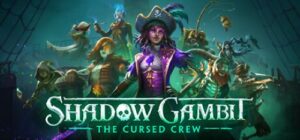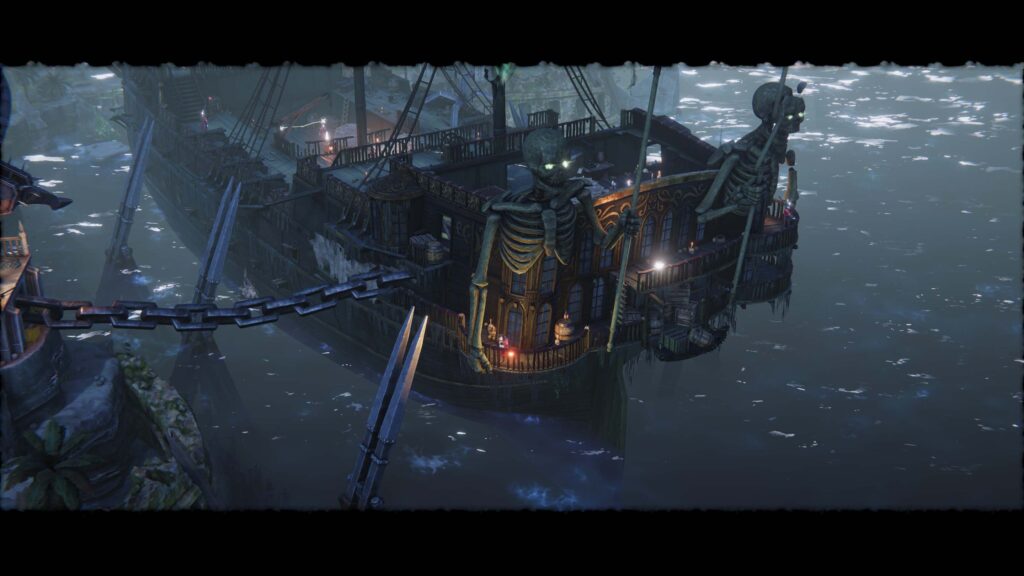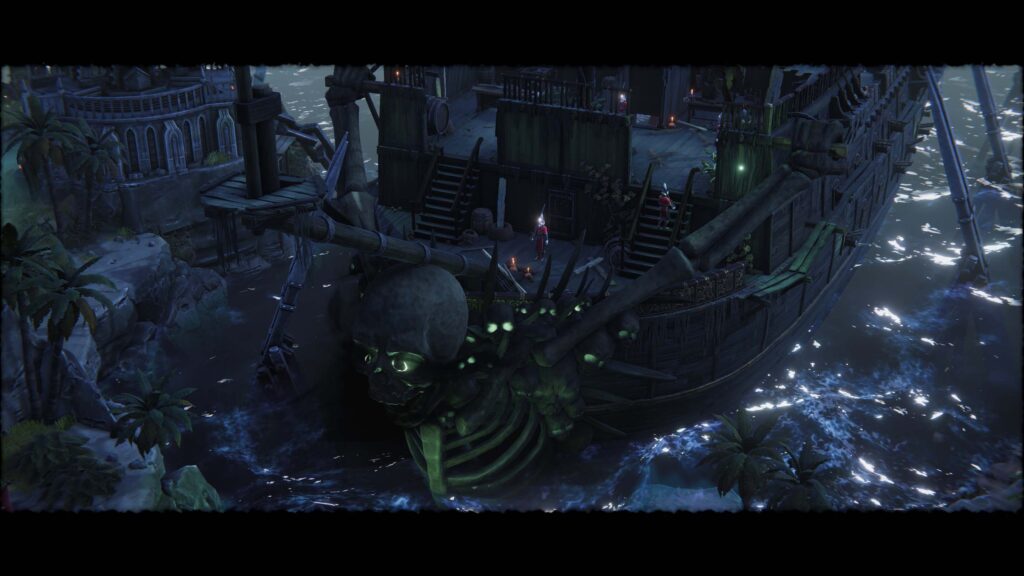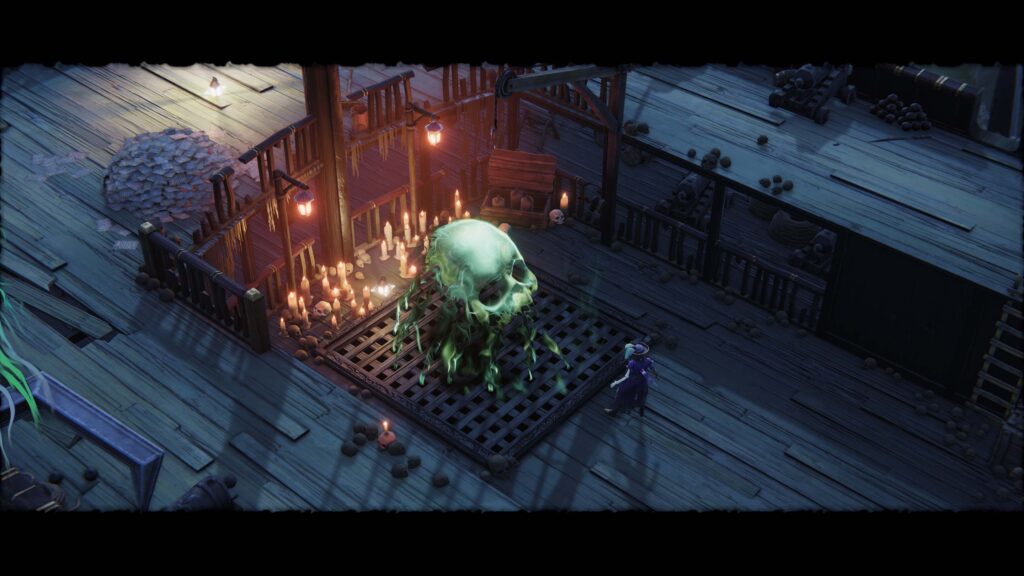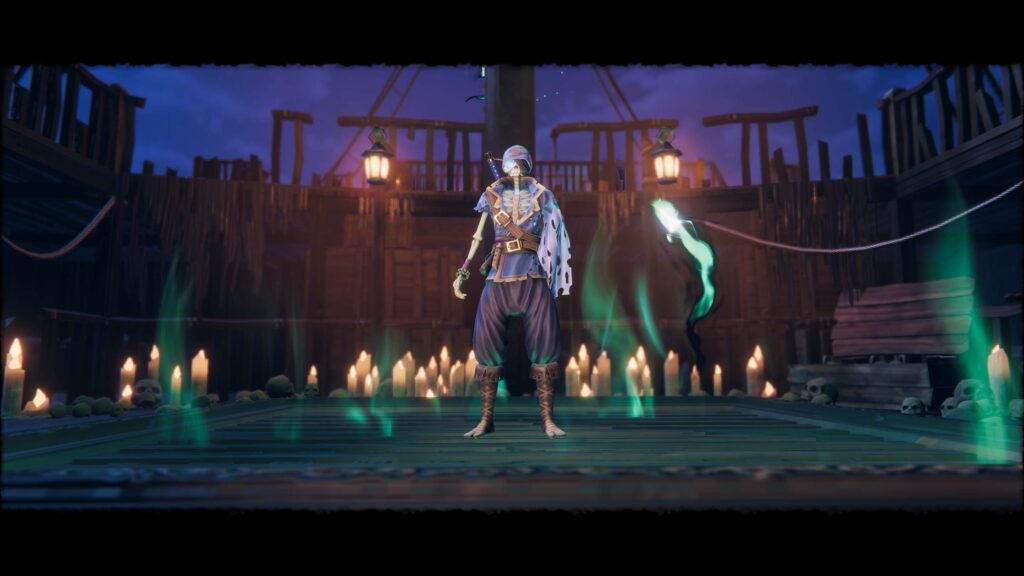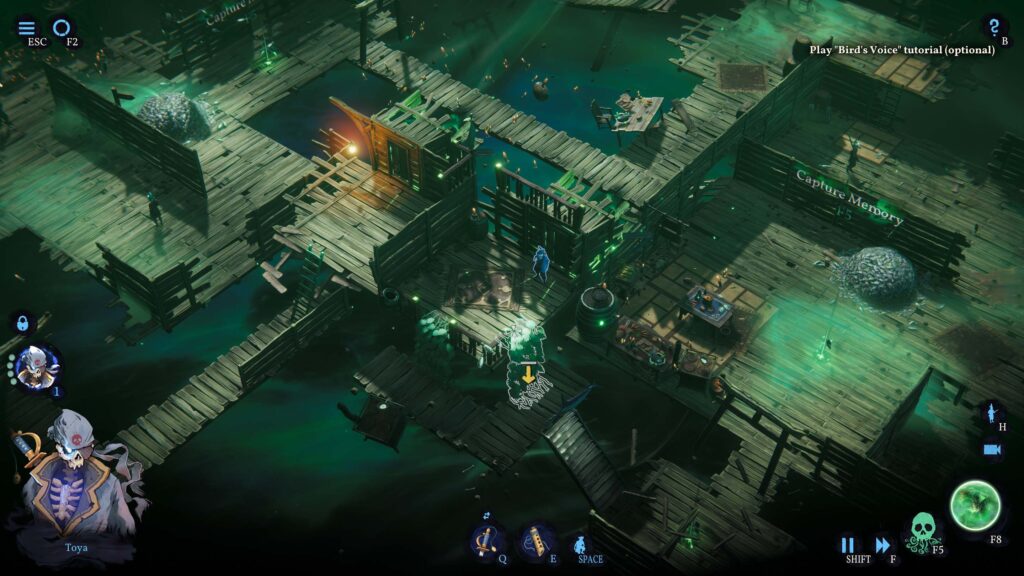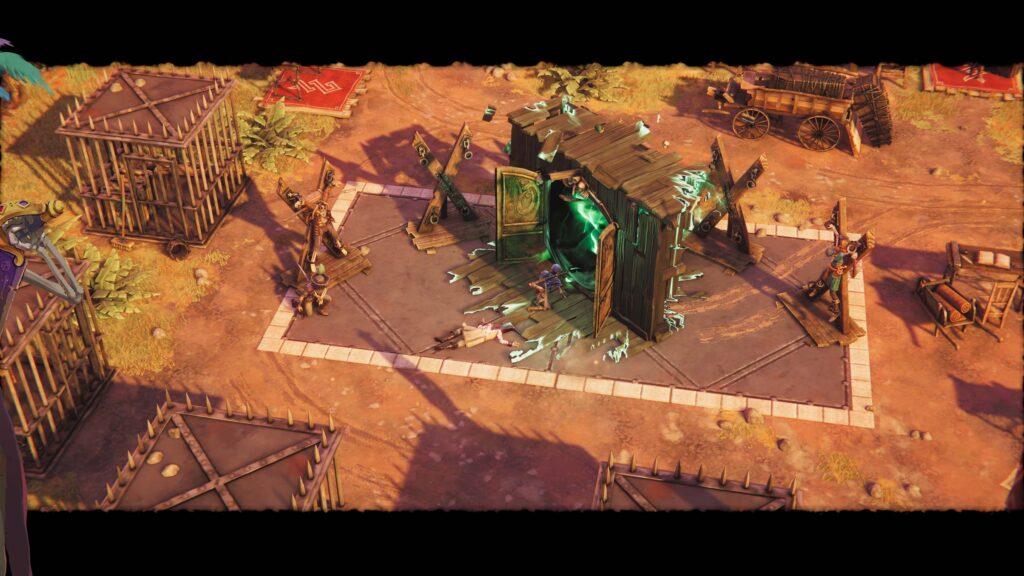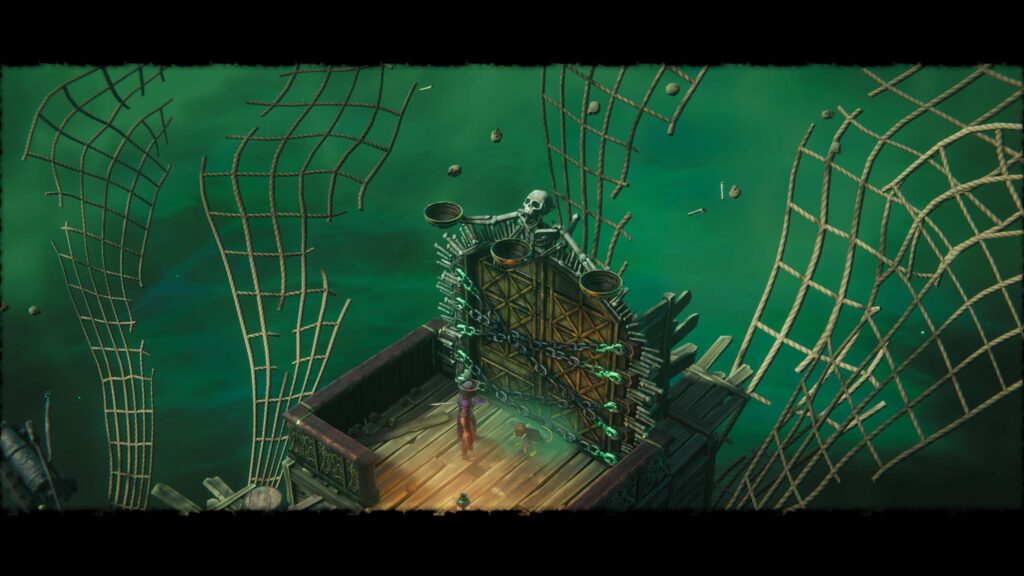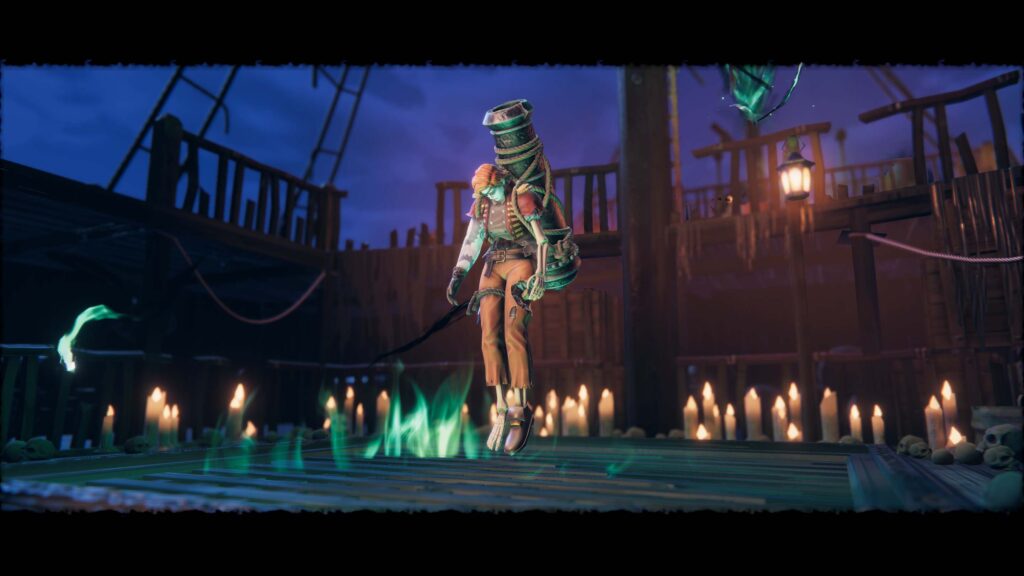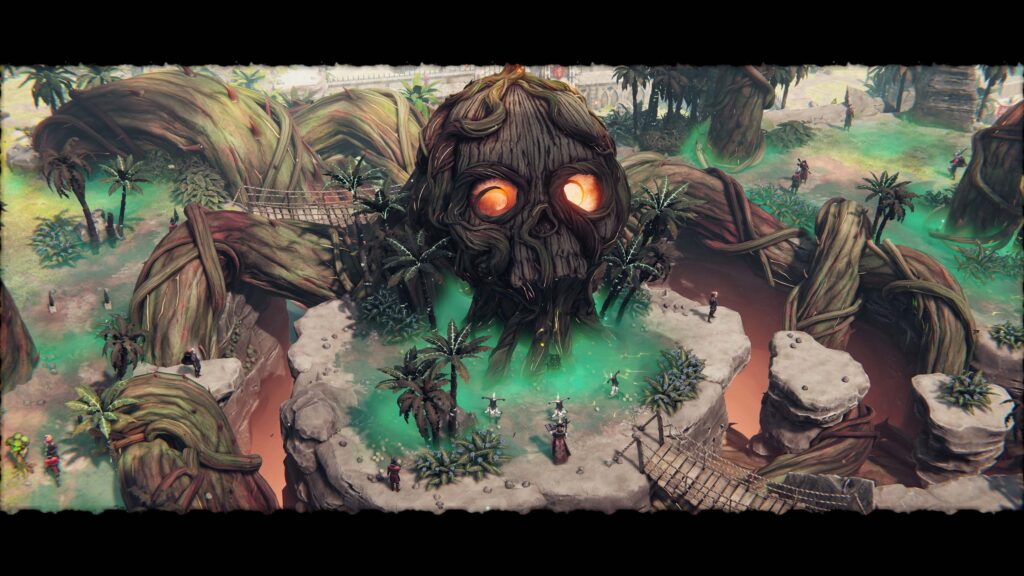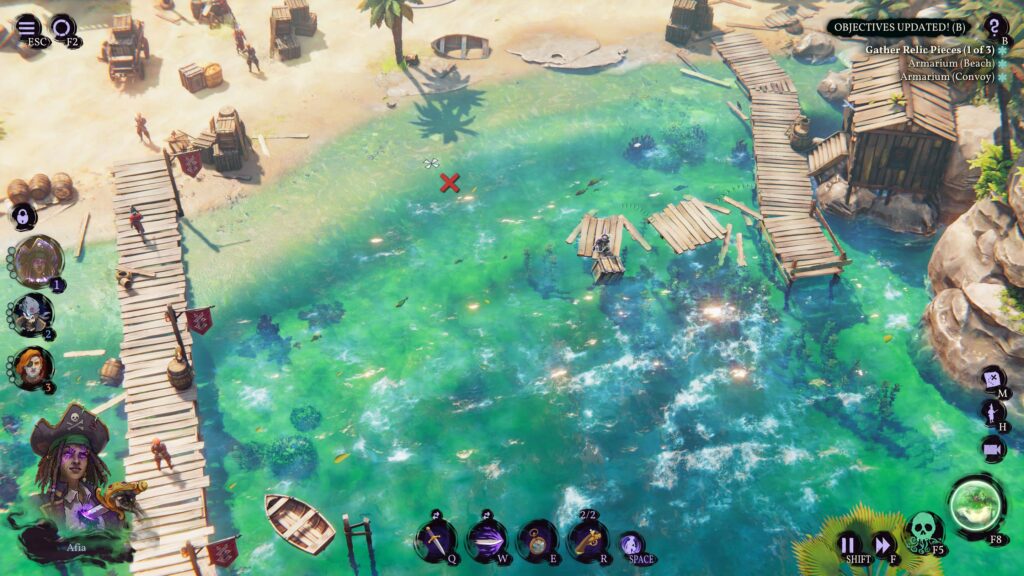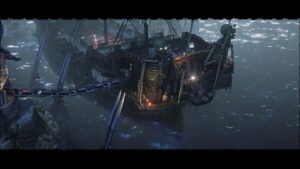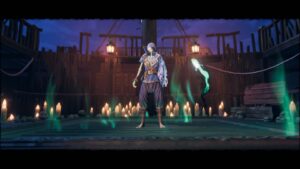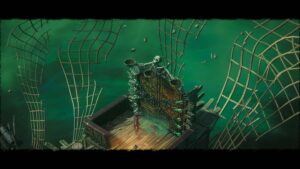Shadow Gambit: The Cursed Crew is the latest real-time tactics entry from genre custodians Mimimi. But this ship has some leaks.
Shadow Gambit: The Cursed Crew review
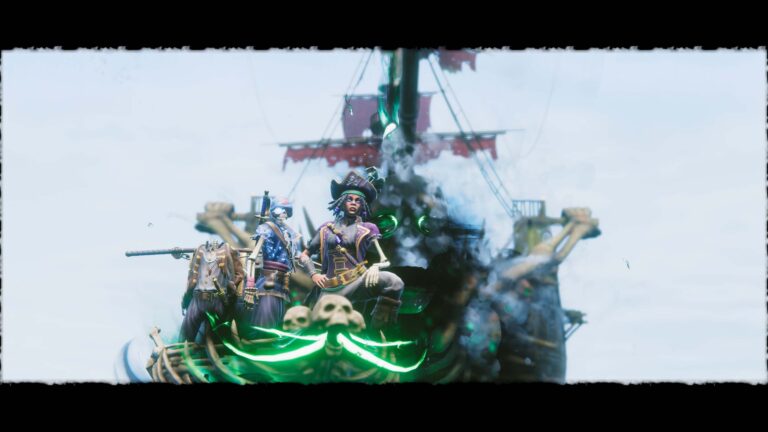
Developers Mimimi are the current reigning custodians of the real-time tactics (RTT) genre. Birthed by the iconic Commandos games, the RTT genre rewards careful planning and stealthy execution. Mimimi previously rebirthed the genre in an impressive way with Shadow Tactics: Blades of the Shogun then delivered an arguably more impressive follow-up with Desperados III. Both are a masterclass in genre refinement, upping expectations with great storytelling, a logical mission flow, interesting character abilities and an appropriate difficulty curve.
But the real Hail Mary was the inclusion of Shadow Mode: a nod towards the turn-based ‘tactics’ influences on the genre that let you freeze time to plan perfectly timed or complex commands. It’s a feature that’s thankfully carried between Mimimi’s earlier games and its latest, Shadow Gambit: The Cursed Crew. That ‘Cursed Crew’ part of the subtitle refers to a group of Pirates of the Caribbean-liked pirates with their own mystical abilities.
As is the trend of the genre, your team starts small and grows throughout the campaign. Mimimi deserves kudos here for offering more of a free-form approach to who you take on each mission. You start with one admittedly powerful character. Soon after, you get to choose between one of two characters to unlock. Then it’s the dealer’s choice for the order in which you unlock the remaining crewmates.
So far, so good. The practical realities of this mean missions feel less tailored for particular characters and more open to any crew combination. It’s a shame most missions are limited to three characters, though, and I did find myself longing for levels that felt curated for specific character abilities. The other problem this raises early on is that instead of specific main missions acting as de facto tutorials, tutorials are relegated to uninspired training rooms.
But that’s just the tip of the head-scratching regression from a developer who’s shown how expertly it can weave things together in the past. I found it impossible to overlook the repeated locations, objectives and the dreaded feeling of ‘I’ve done this multiple times before already’.
Rescuing all of the main characters early on felt like a breath of fresh air. But the wind was quickly knocked out of my sails when I realised I had to collect multiple MacGuffins to unlock everyone.
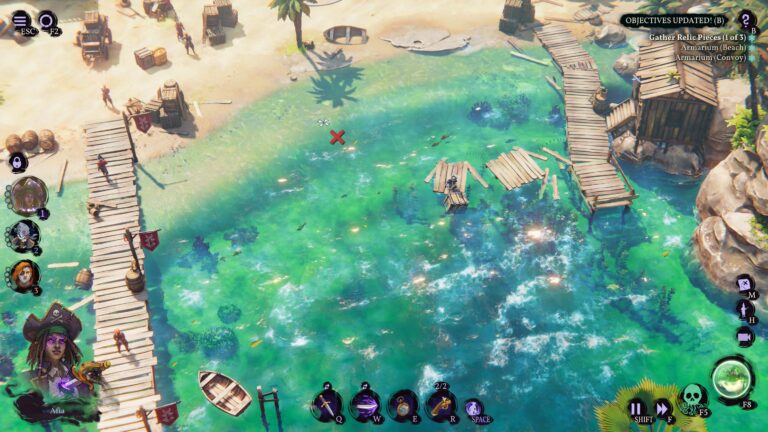
Annoyingly, you can’t knock over both of those MacGuffins at once even if they’re on the same map. I made the mistake early on of playing another mission on an island I’d already visited. My hope at the time was, best case, I could knock over both missions at once—they’re on the same island, right?—and, worst case, I’d clear out a bunch of enemies to make a follow-up easier. Neither proved true.
Because of this, you never feel that you’re making an impact on the world despite a plot that lends itself to consequences via a threatening antagonist. Oftentimes, it felt like the same enemy types were populating all-too-familiar maps, walking the same patrol paths and, ultimately, being dispatched in familiar ways. Given the afterlife motif of the story, maybe this is some subtext commentary on the Groundhog Day nature of purgatory. But I doubt it.
Effectively, it meant I had to recycle increasingly tired maps 12 times to unlock the rest of the crew after the game gifted me the first two. Later on in the campaign, there’s an Assassins Creed II-like requirement to complete what amounts to side missions just to finish the main missions (and a lot of them at that). It’s a clumsy way to handle the campaign that makes things feel more filler than killer as soon as you notice them.
The most frustrating part, though, is how many killer moments there are when the filler isn’t front and center. Moment-to-moment gameplay is honed to a fine art thanks a lot to a collective character-ability suite that’s among the best the genre has seen (so long as you overlook a couple of the lazier mainstays).
Launching enemies out of a back-strapped cannon at other enemies never got old and neither did using a fishing rod to disappear cadavers.
As you might be able to tell from that last sentence, Mimimi isn’t afraid to go weird. And by leaning into the otherworldly abilities of its main cast, there are some abilities that are as satisfying as they are brutally effective. It wasn’t hard to find my favourites. But Mimimi anticipates this and, cleverly, introduces a straightforward system that incentivises you to try a completely new crew in subsequent missions.
This is a really clever way to familiarise yourself with the characters you unlock last, and some of the upgrades it leads to are incredibly powerful. It’s great to see some mission-length variety in here, too. Certain missions I knocked over in under 20 minutes. Others took closer to an hour. By the time you get to the end of the game, it’s not only a welcome new location, it also has some of the trickiest and most satisfying stealth puzzles.
It likely would have been a whole lot easier if I trusted Shadow Mode. But for me, by switching to RTS controls, the game seemingly also made some of the individual character Shadow Mode shortcuts the same as other characters’ ability shortcuts. I didn’t realise this until the end of the game, and it’s not something that was part of Mimimi’s earlier games (I checked).
On one hand, the lack of reliable Shadow Mode in my experience led to some very satisfying moments where I was taking out multiple guards with multiple characters in real time. On the other hand, this issue made the final section feel next to impossible in a massive difficulty spike that otherwise wouldn’t have existed. As it stands, the gamification of save-scumming—used to encourage player experimentation—did make me feel supported in these moments of frustration.
I get that this is Mimimi sailing alone for the first time without the commission of a publisher. But it’s too easy to see the pacing tweaks—nixing one of the MacGuffins (or both), making the crew missions optional, and/or letting players complete multiple objectives per island—to excuse everything. Besides, Mimimi has nailed this gameplay glue in the past, which makes it all the more confusing. If Shadow Gambit had the pacing and storytelling of the older games, it would’ve been another booming broadside. As it stands, it’s left me craving the tightly executed experiences of Mimimi’s previous games.
Related Articles





